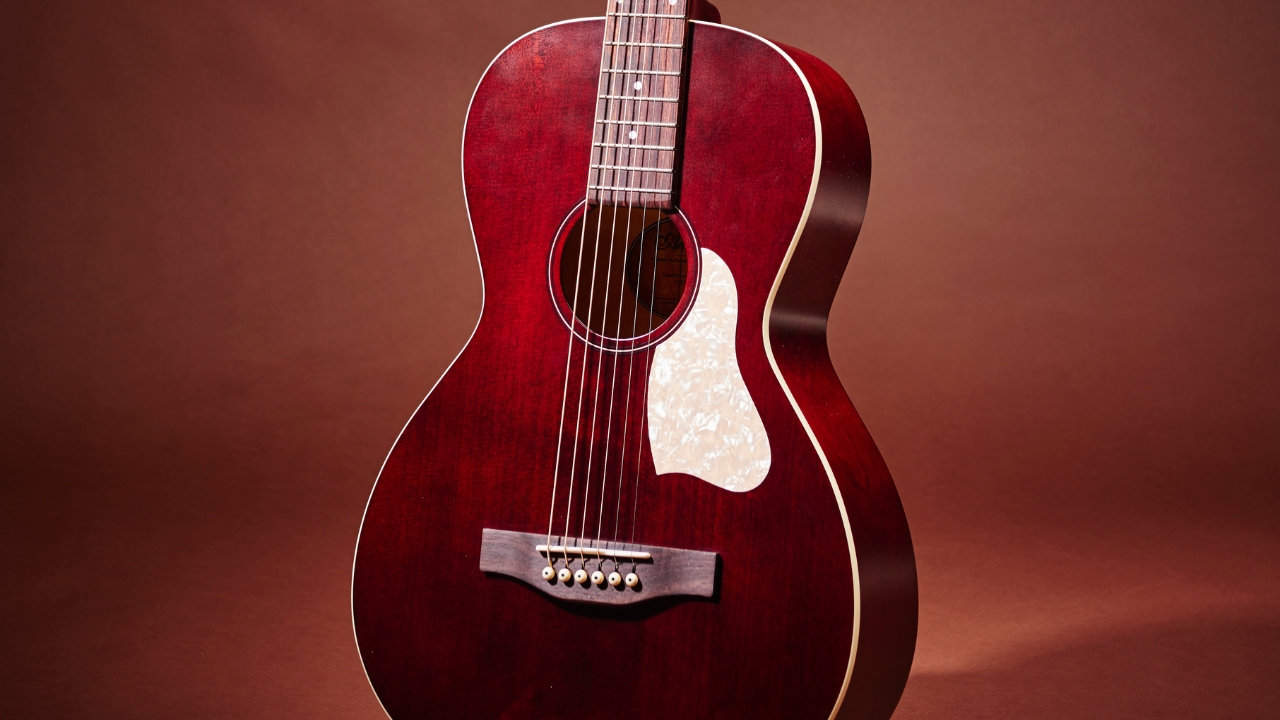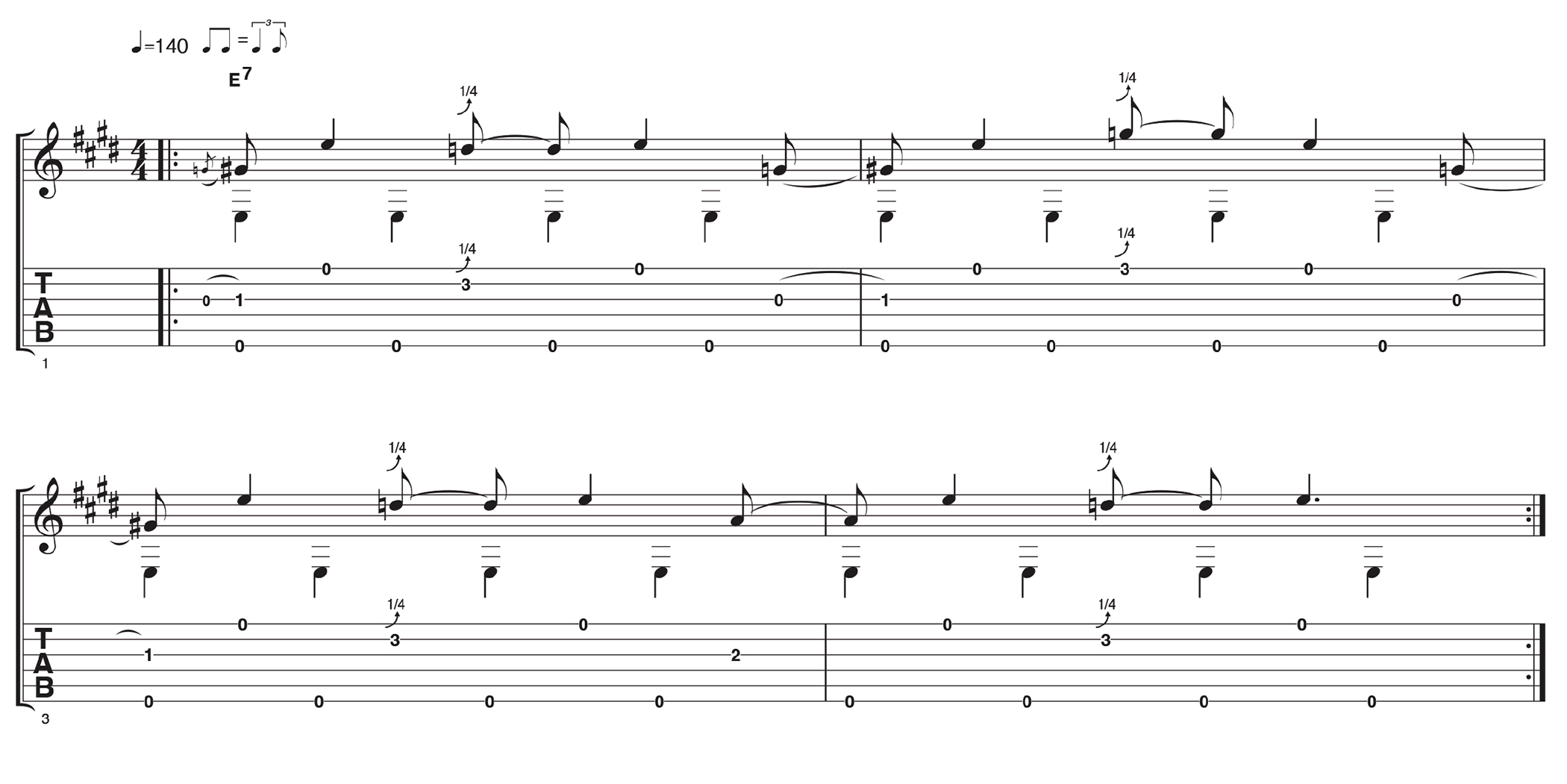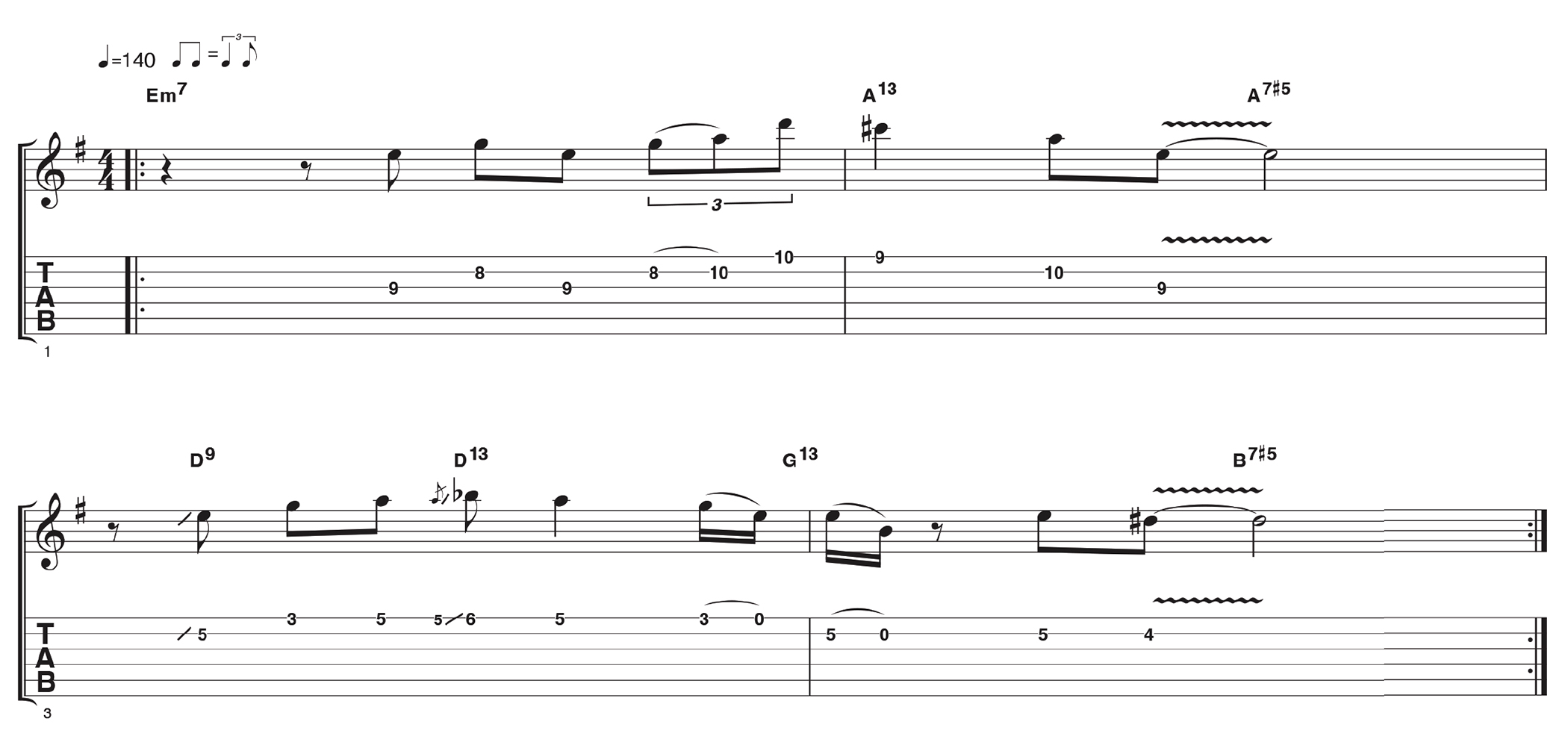
Whatever style of acoustic guitar you most want to play, it’s worth dipping a toe into as many genres as you can. Most genres have a handful of defining signature sounds.
By getting those signatures under your fingers, you can seem like an acoustic Jedi, capable of anything. Or you can transport those sounds back into your usual genre to create new ideas.
Don’t be intimidated by styles that are unfamiliar to you. Everything on the guitar seems impossible the first time you try it, and easy once you master it. Chords with long names are not necessarily harder, and fingerstyle patterns are often less complex than they sound. To get the most out of this lesson, look for ways to adapt these ideas.
You can use the fingerpicking patterns in the acoustic folk examples with other chords, play the blues examples in other keys, try more chords against the ringing open E string in the prog slash chord riff, or throw one of those jazz chords into an unsuspecting pop song.
Example 1. Acoustic Folk – Incorporating basslines with fingerpicking

Your thumb plays the E, A, and D strings, with a steady eighth note rhythm. Once that’s solid, add the other plucked notes with your first finger, or with your middle finger for the B string. Noah Kahan uses this type of idea to great effect on his song You’re Gonna Go Far.
Example 2. Acoustic Folk – Combining fingerpicking and hammer-ons

This picking pattern is more irregular, but still use your thumb for the lowest three strings and fingers for the rest. The hammer-ons add rhythmic interest. Check out Not Strong Enough by boygenius to hear how this type of playing can work in a song.
Example 3. Acoustic Prog – Open-string drones

This hypnotic groove comes from a repeating 16th-note pattern with changing chords. You can try sliding around almost any shape that mixes open and fretted notes and find interesting harmonies. You can think of this one as moving around an open C major chord shape, although you avoid the D string.
Example 4. Acoustic Prog – Using slash chords

A slash chord is any chord where the bass note is not the root note of the chord. If you play a D major chord while letting the low E string ring out, that’s D/E. Changing chords over one sustaining drone creates really interesting harmonies. Prog legends Genesis were big fans of this technique.
Example 5. Acoustic Blues – Fingerstyle groove

The audio for this example is played on a resonator, but you can use any guitar. The groove is the main thing here: get your thumb solidly on the beat, and then place the plucked notes so that they swing nicely. Listen to Justin Johnson to hear this style done right.
Example 6. Acoustic Blues – Delta blues-style turnaround

You never truly perfect this type of lick – there’s always more to learn about getting the sickest swing and the greasiest quarter-tone bends. You can give yourself a head start by listening to Robert Johnson or Jontavious Willis and absorbing the feel. Make crucial notes ‘snap’ by getting your plucking finger underneath the string.
Example 7. Acoustic Metal – Nylon-string fingerpicking

Metallica’s James Hetfield uses a nylon-string guitar in songs like The Unforgiven and Battery. Don’t worry about the chord name in bar 2 – you just slide the open C major shape up two frets. If you’re comfortable with fingerpicking, you might try using your annular (ring) finger for the high E string.
Example 8. Acoustic Metal – Top string trills

Hammer-on and pull-off fills like this are trademarks of bands like Death and Metallica. Once you have the co-ordination together, you can play all kinds of notes with these, so don’t restrict yourself to the tab. Your pull-offs will be louder if you pull slightly downwards towards the floor, ‘plucking’ the string as you release it.
Example 9. Acoustic Jazz – Jazz-style chord groove

Think of jazz chords as adaptations of simpler shapes. These 13 and 7#5 chords are just E-shape barres with your third finger removed from the A string and deployed somewhere on the B string. Advanced jazzers play these with a thumb over the top of the neck fretting the root note.
Example 10. Acoustic Jazz – Jazz-style lead lick

This Julian Lage-style lick fits over the previous chord progression. Lines like these work by targeting key notes from within the underlying chords. The first note in bar 2 is C#, the major third of A13. The lick ends on D#, the major 3rd of B13.







